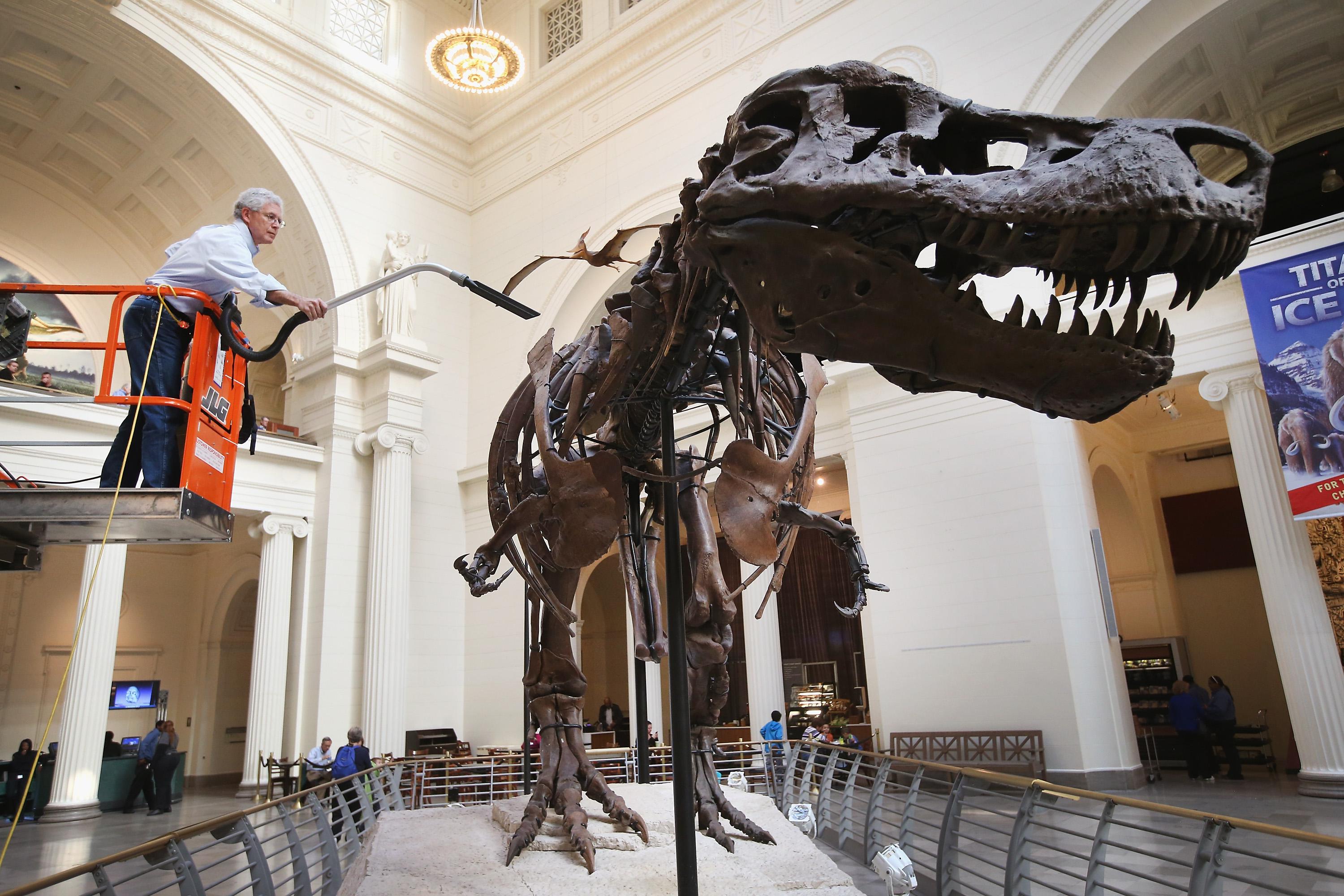A small-town South Dakotan paleontologist, persecuted by a ham-handed government, is stripped of his greatest discovery: the best Tyrannosaurus rex ever found. That’s the compelling storyline of the new documentary Dinosaur 13.
Unfortunately, it’s bullshit.
Dinosaur 13’s embattled hero is Peter Larson, introduced as a “brilliant paleontologist” by no less an authority on earth science than a former National Geographic photographer. In truth, Larson is a commercial collector and vendor of fossils. Paleontologists have formal training in graduate school, where they learn to excavate and document fossil finds to preserve invaluable information. Along the way, one hopes, they learn that fossils are part of the public trust, not to be hawked or pirated. There is no more need for self-styled paleontologists than there is for amateur gynecologists.
If Dinosaur 13 and its sad-eyed protagonist is to be believed—and filmmaker Todd Douglas Martin makes abundant use of testimonials and archival footage to make us believe him—he and his crew inadvertently wandered onto a Sioux reservation, and there, from a badlands escarpment, they excavated an enormous dinosaur, which Larson nicknamed “Sue” after his then-girlfriend, Sue Hendrickson.
Realizing his error, Larson promptly gave the landowner a check for $5,000, a fee “higher than ever offered for excavating an American fossil,” as we are told more than once. Though the landowner never signed an agreement, we are meant to conclude that an offer Peter Minuit would have been embarrassed to make for Manhattan was more than fair for a dinosaur later auctioned for $8.36 million.
In between these transactions, Larson and his Black Hills Institute are subjected to the ravages of the FBI and National Guard, who confiscate first the dinosaur and then all of the business’s files. The first federal foray aimed, rightly, to remove “Sue” from it’s legally challenged custody. But in Dinosaur 13, the fossil’s relocation is a jack-booted raid by that eternal enemy of the lawless West, the gummint.
The files were seized as part of an investigation into widespread allegations of international fossil theft and misrepresentation against Larson. Laborious research resulted in convictions of Larson and others at Black Hills for customs fraud, money laundering, and other offenses. But, in Dinosaur 13’s curious reimagination of the legal process, several convictions and a two-year prison sentence for Larson—which was, admittedly, overly harsh—are somehow proof of Larson’s fundamental innocence.
Though he scanted the law, Larson should have been allowed to keep “Sue,” or so we are meant to conclude, because he loved it so. We are treated to footage of Larson looking forlornly through a warehouse window at his confiscated dinosaur. Who staged that shot two decades ago? Was it Larson himself? Whatever the source, Larson’s not just a good digger and fossil restorer, he’s a talented businessman and publicist.
No one in this hagiography has an unkind word for Pete Larson, not even his ex-wife (one of four), whom he met when he sought out coverage of his plight while she was a researcher for a TV series. And only hosannas come from Larson’s brother, Neal—the same gentle soul who told me recently Larson had booted him out of the family fossil business. Meanwhile, Larson’s persecutors, living and dead, can’t get a word in edgewise. But they’re not immune from cheap shots: The prosecuting attorney is characterized as a media hog in “pancake make-up.”
Lost in Dinosaur 13’s re-invention of history—which is subtitled “a true tale”—is the actual import of the Larson affair. Dinosaur 13 should have celebrated the government. Its servants sought to protect our prehistory from commercial abuse by targeting one of its most prominent dealers. And they got their man.
